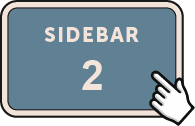Show Navigation Menu
Section Two : Becoming a Researcher/Scholar
Introduction | The Writing Process | Voice | Tone | Using a Style Guide | Paraphrasing vs. Quoting |
Building Blocks of a Paper | Conclusion | References
Chapter 7: Preparing for Writing
Hide Navigation Menu
Home Page
Section 2 Becoming a Researcher/Scholar / Chapter 7 Preparing for Writing
7. Building Blocks of a Paper
Introduction/Thesis
The introduction of a paper should do the following: capture the reader’s interest, provide context for the paper, and explicitly state the purpose of the paper in a thesis or topic statement.
Many writers will write the introduction last, after completing the body of the paper. Because the introduction serves to concisely introduce the topic and purpose of the paper, it may be easier to write it after the topic has been explored fully. Consulting the requirements set forth in a rubric can shape the creation of the introduction. For example, the sample rubric seen in Table 7.1 calls for an introduction that relates to the body of the paper, presents intriguing information, and encourages the reader to continue reading.
Capture the Reader’s Interest
Academic papers have a reputation for being dull or boring, so an introduction that excites readers and draws their attention can help fight that perception. Writers should avoid starting a paper with a dictionary definition in the opening statement (e.g., “The Oxford English Dictionary defines boring as … ”). This is a cliché that has been overdone by eager high school and college students, and it does not belong at the doctoral level. A better way to start an introduction is to provide a meaningful statistic (“One out of five college students has been sexually assaulted on or near his or her campus”); make a declaration that requires explanation (“Technological evolution is inevitable”); or ask a question (“Why did the members of the Nazi party commit atrocities?”). Statistics can also provide an intriguing beginning to a paper (“Consider four women that you know well, and then consider the fact that one out of every four women in the United States has been sexually assaulted”). Regardless of the exact method chosen, writers should develop something creative, yet professional, to invite readers into the paper and to continue reading it.
Provide Context for the Paper
When writing, doctoral learners must explain the purpose of the paper to the readers. What is the goal of the paper, and why is it being written? Graff and Birkenstein (2014) offered a method for responding to this question when they advised students to write their papers as responses to “what others are saying” (p. 20). An academic paper is part of a larger conversation, so begin by explaining to the reader why you are writing it. What are others saying about the chosen topic? Is the doctoral learner arguing for or against something, and why is it important that they do so?
Example:
The genres of science fiction and fantasy have long been labeled nerdy or geeky, and until recent years, these terms have had a derogatory connotation. Science fiction has been dismissed in literary circles as lowbrow and pulp fiction (Example, 2000, p. 1). However, science fiction novels, comics, and films have contributed to society, not only in propelling research and development in technology, but also in sparking conversations and debate on social issues (e.g., racial equality, socioeconomic gaps, and other valuable social justice concerns) (Example & Example, 2001).
Without addressing why the paper was written, and to what it is a response, the statements will have little meaning. They may be finely crafted sentences, but they will not contribute to the academic dialogue.
Explicitly State the Purpose of the Paper
Writers should tell readers what the paper will analyze and what it aims to prove. In an exceptionally long paper, such as a dissertation or research paper, writers may consider providing a roadmap for the reader. For example, “In Chapter 1, the merits of Seligman’s theory of positive psychology will be discussed. Chapter 2 will explore clinical applications of this theory.” This is not always necessary. In a shorter paper, the thesis statement alone is a sufficient roadmap.
Body Paragraphs and Sections
The use of headings and subheadings provides structure and clarity in a paper. Headings should include enough information so readers will understand the content of the section. It is essential that the content of the section aligns with the heading. For example, it would be confusing for readers to see the heading, “Methods,” followed by a description of the foundational research on which the study was based. Clear section headings with corresponding content allow readers to follow the flow of the paper easily, and to find significant sections again later. It is helpful to keep each section specific to its own purpose. Do not address multiple topics in one subsection, as this creates confusion and can muddy the flow of the paper. For example, an empirical article is divided into Introduction/Literature Review, Methodology, Results, and Discussion/Conclusion. Researchers would not discuss the methodology in the literature review section, nor would they present their discussion in the methodology section. By keeping each section specific to its stated purpose, the paper is easier to follow.
The use of transitional phrases and words signal to the reader where the paragraphs are going, such as when adding supporting evidence to your argument (e.g., “Moreover, the tenets of positive psychology have clinically significant effects on patients’ moods”); or moving into a different direction (e.g., “However, despite the clinical significance of this theory, the widespread adoption of its interventions is unlikely”).
Graff and Birkenstein (2014) offered a list of common transitions: “moreover, furthermore, in addition, by extension, ultimately, for example, therefore, consequently, accordingly, likewise, by contrast, however, regardless, whereas, nonetheless, conversely, and as a result” (adapted from the list presented on p. 109-110). This is a partial list; there are other words, phrases, and ways to transition from one topic to another. The essential feature of a transition is that it connects the ideas within the sentences; non-sequiturs are usually not appropriate in academic writing. Given the value placed on concise and clear writing, it is important that each sentence contribute to the overall argument, connecting the new ideas or examples with the previous sentences in the paragraph and setting the stage for the arguments to come in later paragraphs.
Writing the Conclusion of the Paper
To develop the conclusion, writers should reflect back on the analysis or argument, and provide a summary of the most significant points in the paper. If appropriate for the style of paper being written, the writer can offer suggestions or direction for future research. The conclusion can discuss any unanswered questions in the field, and provide support for any suggestions. A solid manner in which to end a paper is to capture key points of the argument, as well as to relate the concluding sentences back to the introduction. This provides a bookend for the paper, which provides continuity for the reader.

